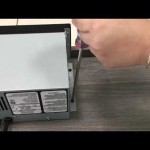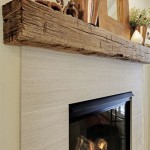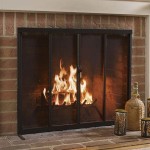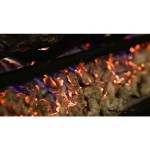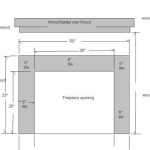How Well Do Electric Fireplaces Heat a Room?
Electric fireplaces have become increasingly popular as supplemental heating sources and aesthetic additions to homes. Their appeal lies in their ease of installation, relatively low cost, and the visual comfort they provide. However, a crucial question remains: how effective are electric fireplaces at actually heating a room?
The heating capabilities of electric fireplaces are multifaceted and depend on several factors – the size of the room, the fireplace's wattage, the home’s insulation, and the desired temperature increase. Understanding these components is essential to determining whether an electric fireplace can adequately meet one's heating needs.
Unlike traditional wood-burning fireplaces that can lose a significant portion of their heat through the chimney, electric fireplaces are designed to be much more efficient. They typically convert nearly 100% of the electrical energy they consume into heat. This is a considerable advantage when comparing heating methods, as it reduces energy waste and maximizes the heat output within the room.
The primary method of heat distribution in most electric fireplaces is via a fan-forced heater. This mechanism draws cool air from the room, passes it over a heating element, and then blows the warmed air back into the space. This forced convection process helps to circulate the heat more evenly and effectively than radiant heating alone. Some models also incorporate infrared heating, which directly warms objects and people in its path, providing a more targeted heating effect.
A key consideration is the British Thermal Unit (BTU) rating of the electric fireplace. BTU is a standard unit of measurement for heat output. A higher BTU rating indicates a greater capacity to heat a larger area. Most electric fireplaces are rated between 4,000 and 5,000 BTUs, which is generally sufficient to heat a room ranging from 400 to 1,000 square feet, assuming standard ceiling heights and insulation levels. However, this is just a guideline. A poorly insulated room will require a higher BTU output to achieve the same temperature increase as a well-insulated one.
It's important to recognize that electric fireplaces are generally intended as supplemental heating sources rather than primary heating systems for an entire house. Their effectiveness is best realized in heating specific rooms or zones, allowing individuals to lower the central thermostat and save energy by only heating the spaces they are actively using.
The cost-effectiveness of using an electric fireplace for heating also depends on the local electricity rates. While the units themselves are relatively inexpensive to purchase, the operational cost can vary significantly. It’s crucial to calculate the energy consumption of the fireplace against the local electricity rates to estimate the running costs and determine whether it represents a more economical heating option compared to other alternatives.
The thermostat control on an electric fireplace plays a significant role in maintaining a desired room temperature. Most units are equipped with adjustable thermostats that allow users to set a specific temperature, and the fireplace will automatically cycle on and off to maintain that level. This feature helps prevent overheating and minimizes energy consumption by only operating when necessary.
Heating Capacity and Room Size
The relationship between the electric fireplace's BTU output and the room size is central to determining its heating effectiveness. As mentioned earlier, a typical 5,000 BTU electric fireplace can adequately heat a room up to 1,000 square feet under ideal conditions. However, this is not a universal figure. Factors such as ceiling height, window size and quantity, and the presence of drafts can significantly affect the unit's heating capability.
For instance, a room with high ceilings will require more BTUs to heat than a room with standard 8-foot ceilings. Similarly, a room with large, single-pane windows will lose heat more rapidly, necessitating a higher BTU output to compensate for the heat loss. Addressing these factors by sealing drafts, adding insulation, or using window coverings can improve the fireplace's heating performance.
It is also pertinent to consider the purpose of the room. A bedroom may only require a modest temperature increase, while a living room used for relaxation may necessitate a warmer environment. These differing needs will influence the desired BTU output from the electric fireplace.
Insulation and Environmental Factors
The effectiveness of an electric fireplace, or any heating system, is profoundly influenced by the insulation level of the home. Adequate insulation in walls, ceilings, and floors reduces heat loss, allowing the fireplace to maintain a comfortable temperature with less energy consumption. Conversely, poorly insulated homes will experience significant heat leakage, making it challenging and costly to heat the room effectively.
Environmental factors such as the external temperature and climate also play a critical role. In colder climates, where the temperature differential between the inside and outside of the home is greater, the electric fireplace will need to work harder to maintain a desired indoor temperature. Conversely, in milder climates, the fireplace will have a less demanding task, making it more effective and energy-efficient.
Drafts and air leaks around windows, doors, and other openings can also undermine the effectiveness of the electric fireplace. These drafts allow cold air to enter the room, counteracting the heat produced by the fireplace. Sealing these drafts with weather stripping, caulk, or other methods can significantly improve the fireplace's heating performance.
The construction materials of the room also play a role. For instance, concrete floors and walls tend to absorb heat, which can make it harder to warm up the room initially. Once warmed, however, these materials can retain heat for longer periods, helping to maintain a more consistent temperature. Carpeting, on the other hand, can help insulate the floor and make the room feel warmer overall.
Types of Electric Fireplaces and Heating Technologies
Different types of electric fireplaces employ varying heating technologies, each with its own set of benefits and limitations. The most common types include fan-forced heaters, infrared heaters, and ceramic heaters.
Fan-forced heaters, as mentioned earlier, utilize a fan to circulate air over a heating element and distribute warmth throughout the room. These are generally effective at heating a room quickly and evenly, but they can be slightly noisier than other types. The airflow from the fan also helps to distribute the heat more widely than a radiant heater would.
Infrared heaters, on the other hand, use infrared radiation to directly warm objects and people in the room. This type of heating is more targeted and can provide a more immediate sense of warmth. Infrared heaters are often quieter than fan-forced heaters, but they may not be as effective at heating the entire room evenly. They are particularly effective for providing supplemental heat in a specific area, such as near a chair or sofa.
Ceramic heaters use a ceramic heating element, which is known for its even heat distribution and energy efficiency. These heaters are typically smaller and more compact than fan-forced or infrared heaters, making them suitable for smaller rooms or personal spaces. They also tend to be relatively quiet in operation.
Some electric fireplaces combine multiple heating technologies to maximize their heating performance. For example, a unit might feature both a fan-forced heater and an infrared heater, allowing the user to choose the most appropriate heating mode for their needs. These hybrid models offer greater flexibility and can provide a more comprehensive heating solution.
Finally, the flame effect technology used in electric fireplaces can also influence the perceived warmth and comfort of the room. Realistic flame effects can create a cozy and inviting atmosphere, enhancing the overall heating experience. While the flame effect itself doesn't contribute to the actual heat output, it can contribute to the psychological perception of warmth. Some models also offer adjustable flame brightness and color settings, allowing users to customize the ambiance to their liking.
In summary, the heating effectiveness of an electric fireplace is contingent upon a confluence of factors, including the BTU rating, room size, insulation levels, environmental conditions, and the type of heating technology employed. Understanding these elements empowers individuals to make informed decisions about selecting and utilizing electric fireplaces as supplemental heating sources to maximize their heating potential and achieve desired levels of comfort and energy efficiency.

Do Electric Fireplaces Give Off Heat Vevor Blog

Are Electric Fireplaces Energy Efficient We Love Fire

Do Electric Fireplaces Give Off Heat Direct Learning Center
Do Electric Fires Give Off Much Heat Bespoke Fireplaces

Do Electric Fireplaces Give Off Heat Here S What To Know Before You Buy Hunker

ᑕ❶ᑐ How Do Electric Fireplaces Put Out Heat Questions Answers

Are Electric Fireplaces Energy Efficient Direct Learning Center

ᑕ❶ᑐ Electric Fireplace Heating Can It Heat Your House
Can An Electric Fireplace Warm A Room
.aspx?strip=all)
Top 11 Electric Fireplace Questions Faq Regency
Related Posts



